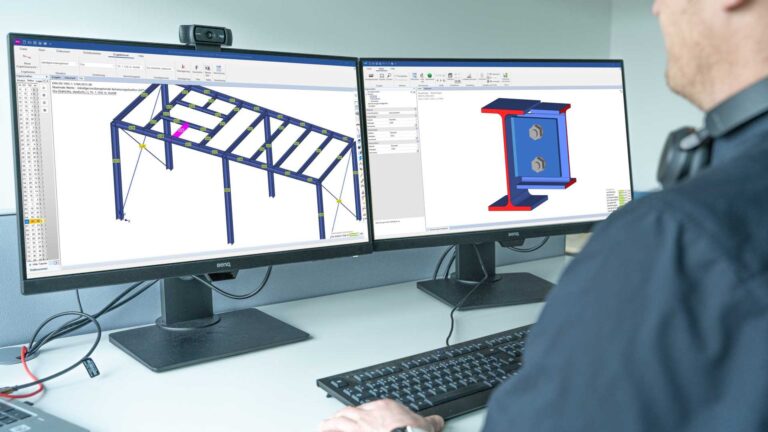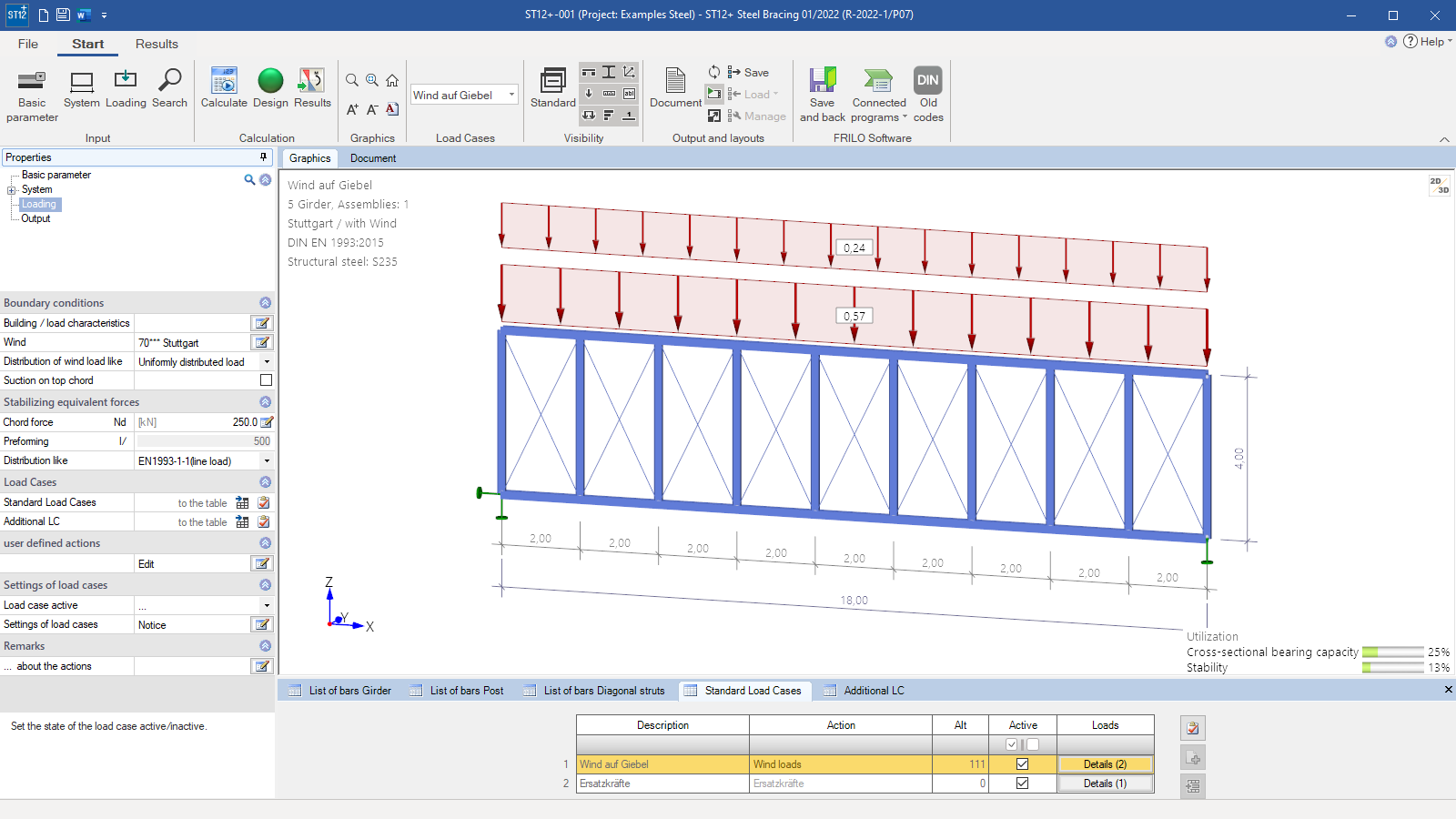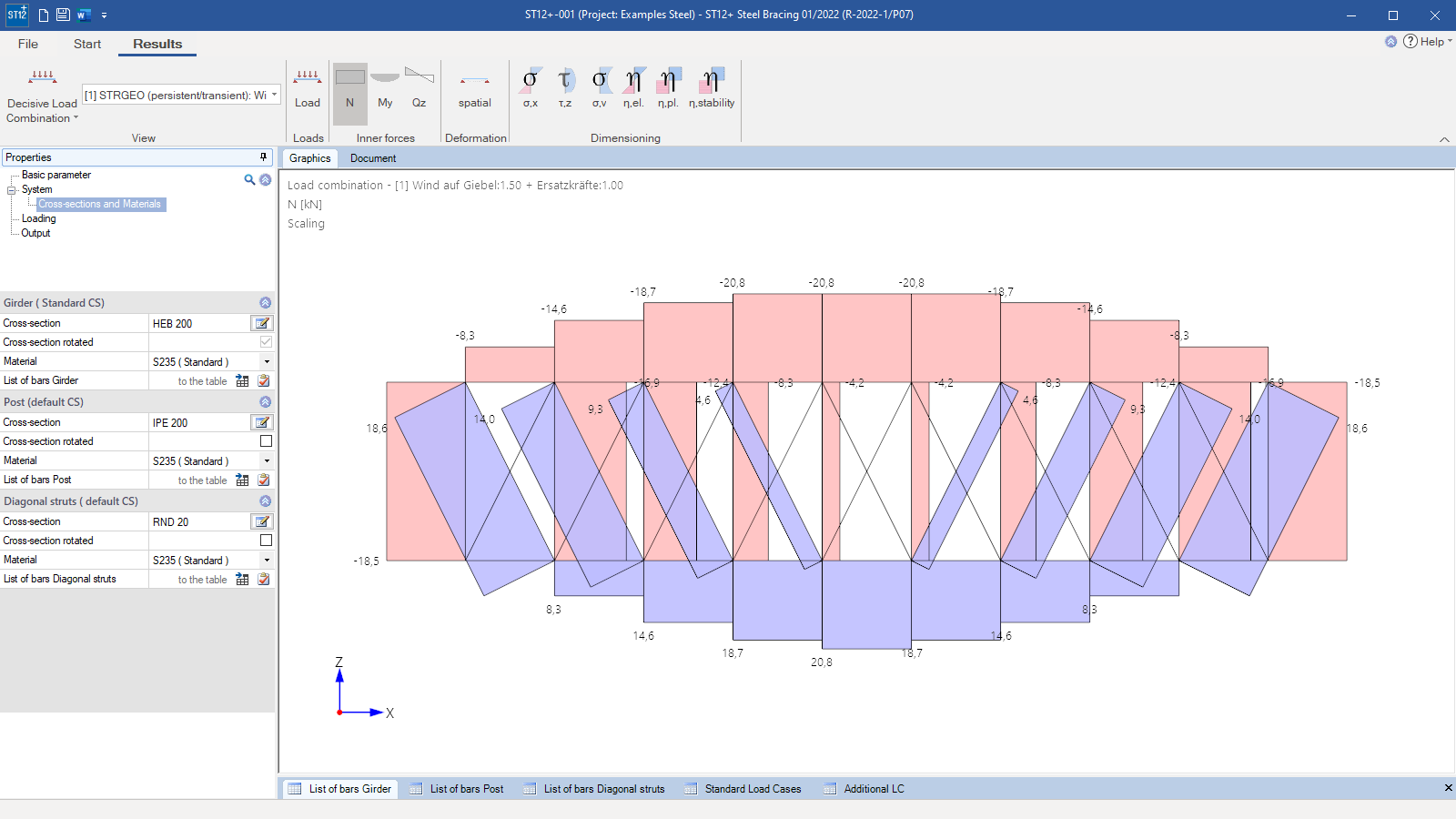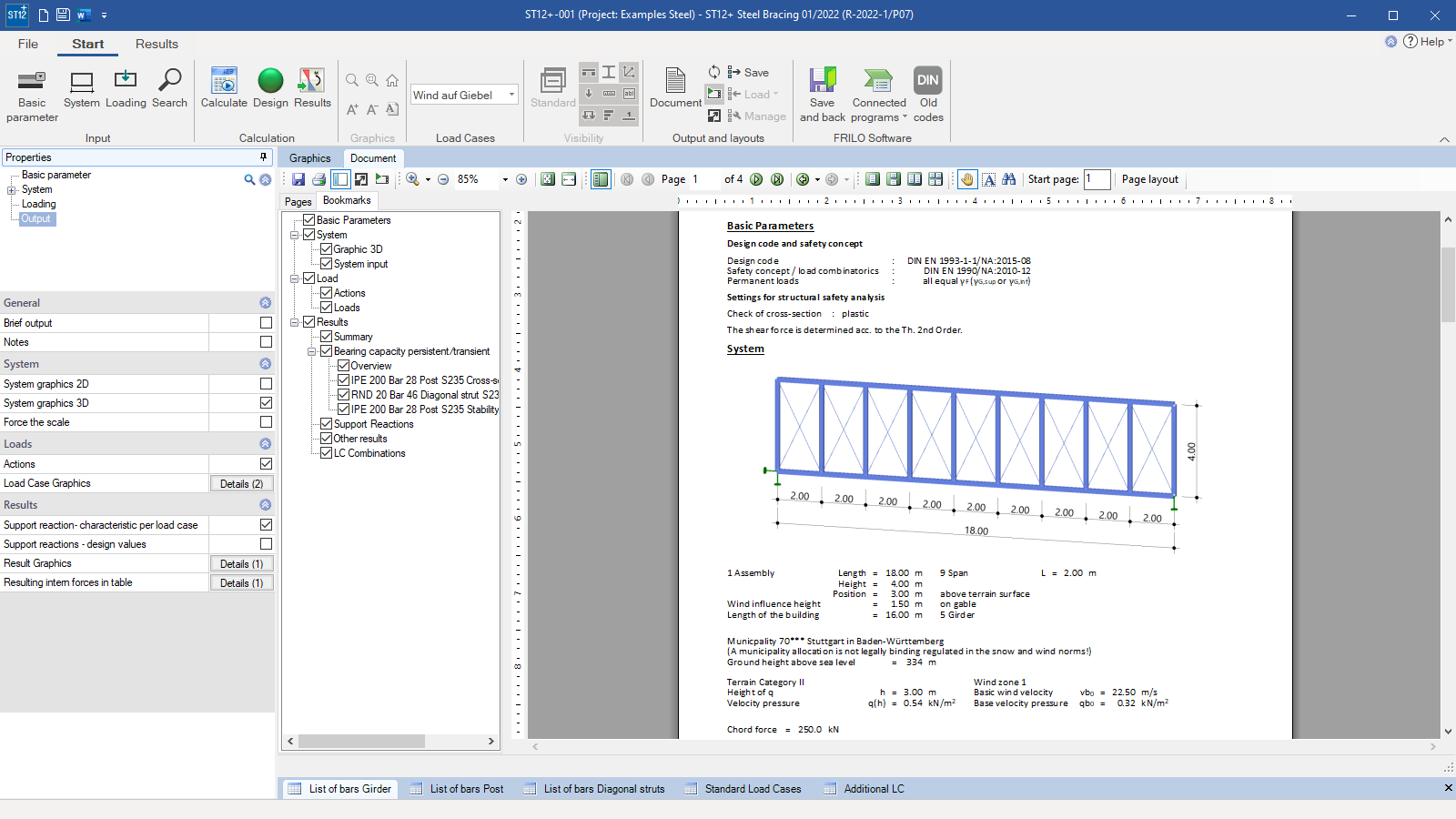
Steel Bracing
The “Steel Bracing” program is used to analyze and design steel bracings typical in the construction of portal frames. It allows the analysis of compression-slack diagonal steel struts for latticed and solid-web trusses.
Only available in FRILO Ultimate
Core capabilities
Material
Different materials can be selected for the individual components. The following materials are available:
- Structural steel (S235, S275, S355, S450)
- Annealed steel (S275N to S460N)
- Thermo-steel (S275M to S460M)
- Weathering steel (S235W to S355W)
- High-temperature steel (S460Q to S460QL1)
- Hollow section, hot-finished (S235H to S355H)
- Hollow section, hot-finished, fine-grain (S275NH to S460NH)
- User-defined steel
Structural system
Available systems:
- Truss with compression-slack diagonal struts
- Constant span lengths, a symmetrical division or individual span lengths
Cross-sections:
- Trusses: I-sections as standard shapes or user-defined sections
- Posts: I-sections, circular, square and rectangular hollow sections as standard shapes or user-defined sections
- Diagonal struts: I-sections, circular, square and rectangular hollow sections, angular, round, and flat steel as standard shapes or user-defined sections
Supports:
- Hinged supports at the bottom chord of the bracing
Loads
- The wind loads are determined automatically based on the defined building geometry
- The determination of the wind loads depends on the specified location of the building
- Automatic determination of the stabilising loads either as uniformly distributed loads as per DIN EN 1993-1-1, 5.3.3 or as node loads in accordance with Petersen Stahlbau (Grundlagen der Berechnung und baulichen Ausbildung von Stahlbauten)
- The user can enter user-defined load cases in addition
- Automatic generation of the load case combinations
- Concentrated load (transverse) and line load (transverse) at the top and bottom chord
Structural safety
The program maps automatically all necessary combinations of actions in accordance with the safety concept set forth in Eurocode 0. Either the elastic or plastic cross-sectional resistance is verified. In this verification, the internal forces are determined in a first-order analysis with consideration of the applying stabilisation loads and the failure of the diagonal compression strut. For the diagonal tension struts, the cross-sectional resistance of the compression posts is verified. In addition, a stability verification as per DIN EN 1993-1-1, 6.3.1 is performed. The verification of the chord for the additional axial chord force is not supported in this software.
Output profile & results
Output profile:
- Pre-set brief output or user-defined scope
Result graphs:
- Internal forces: N, My, Qz
- Stresses: σ,x ; τ,z ; σ,v
- Utilisation Eta: n,el ; n,pl ; n,stability
File formats
- Word
- Printer
Structural safety verifications
- DIN EN 1993
- ÖNORM EN 1993
- BS EN 1993
Wind loads
- DIN EN 1991-1-4
- ÖNORM EN 1991-1-4
- BS EN 1991-1-4
Support resources
News

Corporate headquarters as reinforced concrete skeleton structure
With the construction of a new corporate headquarters, Heidelberg Materials has demonstrated the remarkable range of reinforced concrete as an attractive building material. FRILO and Allplan were used by the structural engineers.

FRILO launches version 2024-2 with powerful updates for structural analysis and design
Highlights include the optimised design of Schöck Isokörbe®, the advanced integration of DC foundation engineering programs into the FRILO environment and new RSX interfaces for detail verifications in steel construction.




